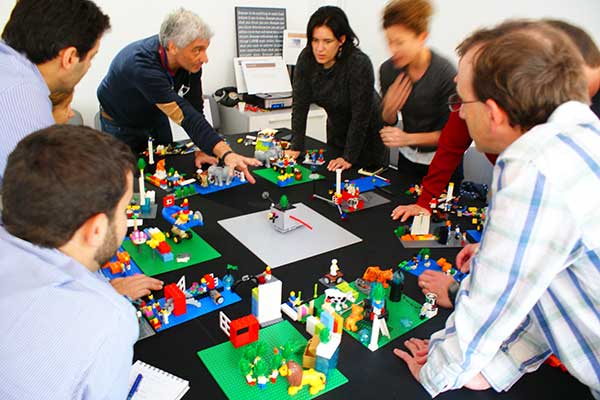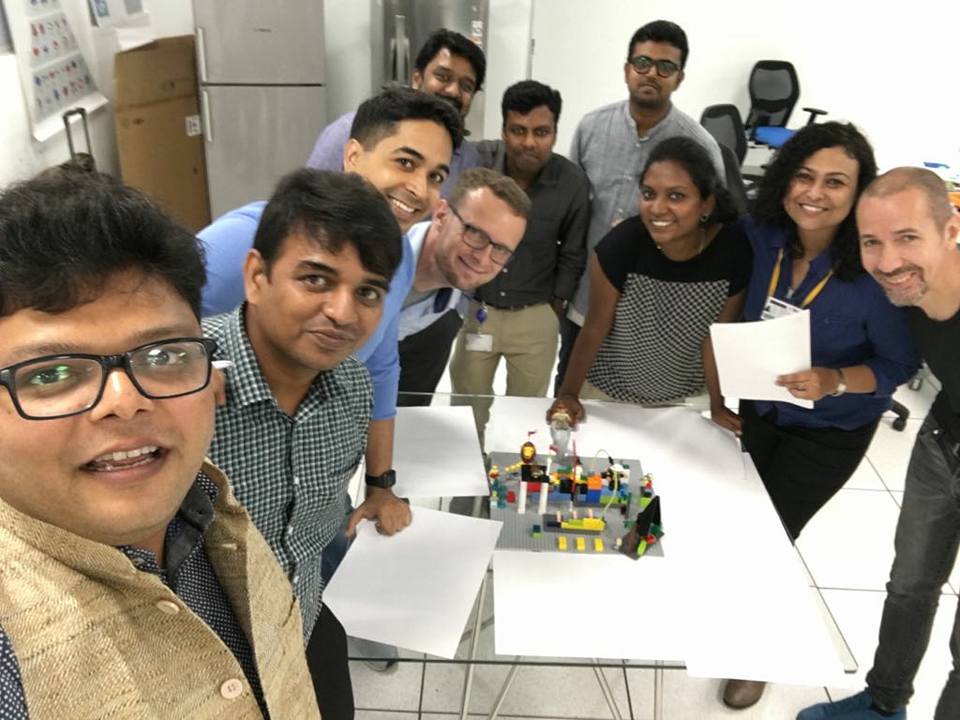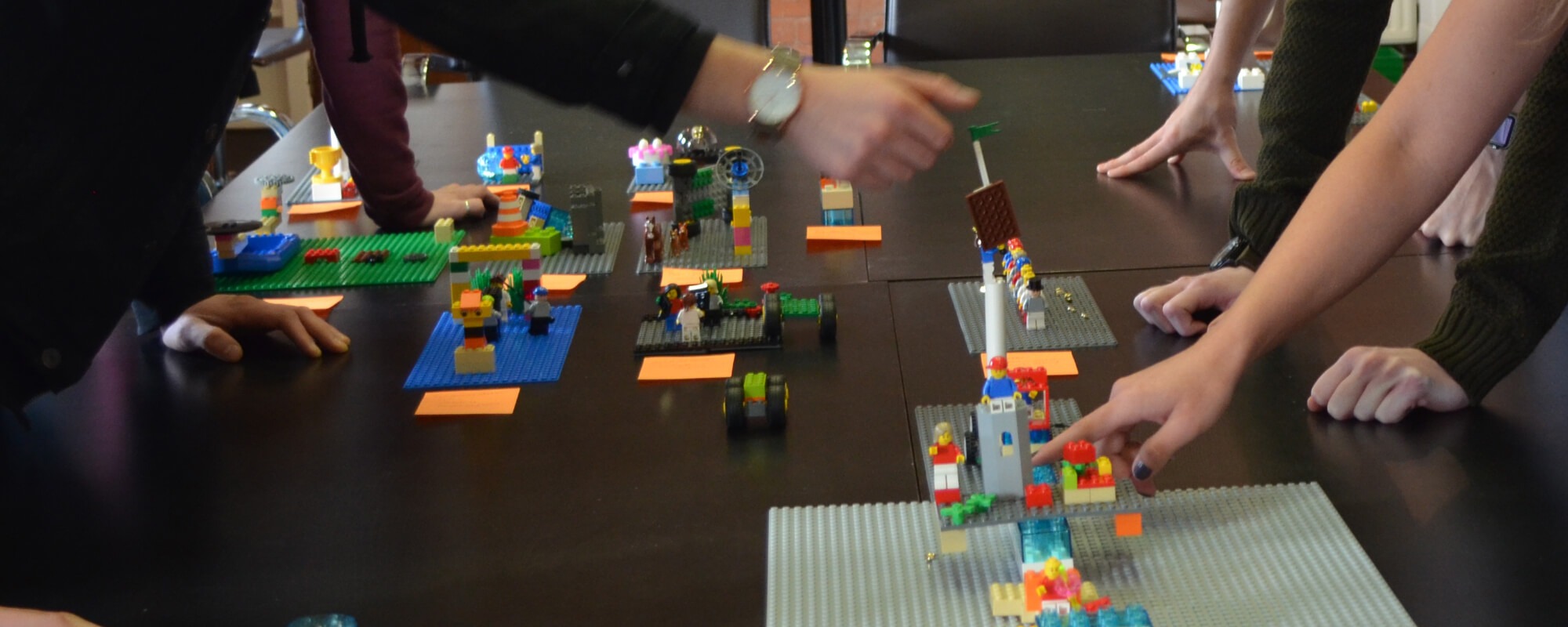 I recently had the pleasure of facilitating a LEGO SeriousPlay workshop at Hot Source. One of the participant, Marek Pawlowski, shared his experience.
I recently had the pleasure of facilitating a LEGO SeriousPlay workshop at Hot Source. One of the participant, Marek Pawlowski, shared his experience.
As a facilitator, used to describe the method, it was refreshing and an immense pleasure to know that he experienced exactly what I always described when I talk about the power and benefits of LSP. Thank you @Marek for such an amazing post!
Improvement requires change, whether that happens gradually through iteration or in big leaps through sudden sparks of creativity. This is true of improving anything, from companies to individual products. It’s something I think about a lot in the context of the MEX initiative, which is, at its heart, about helping people to improve digital experiences. We are always looking for new ways to equip people to make good changes to the user experience of the products they’re designing.
The difficult part is that ‘improvement’ is very subjective. Realistically, you can only ever hope the changes you make will ‘improve’ things for most of your users. There simply is no such thing as an improvement which is objectively better for everyone.
However, the application of objective processes to achieve a creative result can help increase the chance your subjective improvements will be applicable to the largest possible number of users. This is why we try different techniques at MEX events, from physical exercises – like thinking about how the movements most natural to your body might transpose into digital interfaces – to low-fi, fast-paced model making.
While I’ve organised many of these different facilitations over the years, I was intrigued by the opportunity to be participant for a change, and in an exercise I’d never tried before, using Lego for serious play, facilitated by Patrizia Bertini (@legoviews). It was hosted by UX agency Foolproof (@foolproof_ux) and organised by Hot Source(@hsnorwich), a networking group in Norwich, UK (for our international readers: a small city in the East of the country – the significance of which will become apparent later).
Patrizia’s method is derived from the Lego Serious Play technique and qualification, formalised by Robert Rasmussen – formerly a product development director at Lego, in 2002. The premise is that by occupying participants’ hands with a physical task like assembling Lego blocks, you can help them to think and discuss more creatively about other, often abstract problems. In addition, the Lego itself provides an accessible medium to give physical form to your opinions.
Although the participants did not know this at the start, the purpose of the evening was to identify the challenges facing the creative industry in Norwich and propose a solution. However, Patrizia did not reveal this until the end, and instead focused her efforts on immediately engaging a relatively large group (15 participants, she usually works with 5 – 10).
Everyone sat around a large table, covered in Lego, and she explained a few ground rules: everyone who starts must finish (i.e. you can’t disappear half way through to make a phone call) and if you need to leave for a bathroom or unexpected break the rest of the group will pause and wait for you. Both of these rules emphasised that although we’d be building things as individuals, we were participating in a group challenge.
All of the actual Lego building challenges – from constructing a tower to riffing on what it means to be creative – were very rapid, 4 minutes each at most. This pace forced everyone to create without hesitating and, of course, the results were diverse, but crucially no one felt held back by fear of their medium.
After each round of building, Patrizia would ask each person in turn about their model and – significantly – to answer only with reference to the model itself. In this way, the models became the filters which allowed people to address the questions without bringing their own personal baggage into the group.
It was a neat way of solving one of the biggest problems in time-limited workshops: time wasted by everyone communicating their existing views and personality, usually by a round of ‘Hi, I’m Marek and I do XYZ’ style intros. The whole point of a creative workshop like this is to give people a license to think outside their existing roles, but most start with the standard, tedious round of intros, which only serve to reinforce who you are when you start the workshop rather than who you could be when you come out of it.
Patrizia’s skillful facilitation bypassed this stage, yet everyone around the table still knew more about everyone else’s personality by the end. It also meant participants could stay focused on responding to the specific building challenges she posed.
We went through several rounds of building, breaking down the models each time, until she started to guide us towards more specific questions, like making a representation of the problems facing the creative industries in Norwich. After we’d each explained these challenges, she asked us to keep the models and adjust them to show how we’d solve the problem we’d identified.
The final stage was to come together in a group by each placing a red Lego brick on someone else’s model which we thought represented a good solution and discussing why. Then, working together, we had to agree which elements of the solution we’d contribute to a final proposal – in the form of a Lego model – but only adding items which met with universal agreement.
By this stage, about two hours in, it was obvious a group of relative strangers were able to discuss, collaborate and work through problems because of the way Patrizia’s process had broken down traditional barriers and overcome the usual group dynamics in which a small number dominate the session. It would have been remarkable for this alone – the ability to get everyone meaningfully involved – but also for the way time seemed to fly by, without anyone feeling the need to leave or be distracted by their phone.
So, what of the result itself? After all, however interesting the process, the real test is whether it produced a useful outcome.
It left me with several conclusions:
- We were discussing Norwich, but you could substitute any number of small, regional cities I’ve visited in the UK, US and Europe: no one is alone in questioning the effectiveness and future of their creative industries.
- Communities, of shared practice, and of moral support are at the heart of any industry and nurturing them is always a good starting point (it was interesting to hear Thomas Foster, outgoing head of UX at a large bank saying something similar about communities of practice within large organisations at the March 2014 MEX).
- Connections are vital, both in the sense of encouraging individuals to connect with each other to share experiences, and in the physical sense: good links enable the import and export of talent.
- Every regional city has one or two large ‘anchor’ clients which dominate the local business scene. This has benefits, but can stifle creativity and hold back expansion. Look outwards and recognise the opportunities in working with a diverse range of smaller clients.
- (and yes, burying Alan Partridge was also mooted!)
The results did not necessarily break new ground in the content of the answers, but the efficiency with which they were arrived at, while still being sufficiently collaborative that everyone was able to contribute was impressive. The method was also effective for the way it maintained momentum and kept group members interested in what each other were doing. Lego alone did not achieve this – indeed, you could have substituted any number of other materials – it was primarily down to the skill of the facilitator, who maintained an admiral balance of discipline, fun and inquiry.
Patrizia Bertini has also created a series of video interviews with designers and architects, where she uses Lego play as a key part of her interview technique to help the participants open up the discussion. Recommended viewing.





 Become a LEGO Serious Play facilitator - check one of the upcoming training events!
Become a LEGO Serious Play facilitator - check one of the upcoming training events!